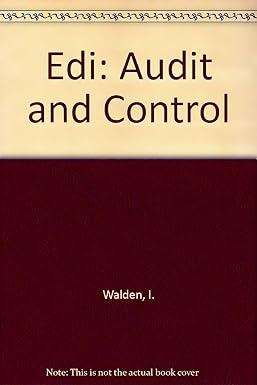Question
Question 1 35 marks (a) Explain briefly each of paragraphs 1-3 of Article 7 (Business Profits) of the 2014 OECD model tax convention, and the
Question 1 35 marks (a) Explain briefly each of paragraphs 1-3 of Article 7 (Business Profits) of the 2014 OECD model tax convention, and the primary purposes of each of these paragraphs. (8 marks)
(b) Explain briefly the primary purposes of paragraphs 1-7 of Article 5 (Permanent Establishment) of the 2014 OECD model tax convention. (2 marks)
(c) With specific reference to the exact relevant elements of the OECD model tax convention where relevant in your responses, comment on whether a permanent establishment will generally exist in the following scenarios: (20 marks) i. a construction project lasting eleven months, where there is a relevant double tax agreement in place; ii. an office, where there is a relevant double tax agreement in place; iii. the maintenance of a fixed place of business primarily for the purpose of purchasing goods for an enterprise, where there is a relevant double tax agreement in place; iv. the maintenance of a fixed place of business solely for the purpose of carrying on an activity of a preparatory or auxiliary character; v. a non-independent agent acting on behalf of an enterprise and habitually exercising an authority to conclude contracts in its name, where there is a relevant double tax agreement in place; vi. a fixed place of business through which the business of an enterprise is generally carried out, where there is a relevant double tax agreement in place; vii. an enterprise carrying on business through a general commission agent of independent status acting in the ordinary course of business, where there is a relevant double tax agreement in place; viii. a satellite in geostationary orbit above a contracting state, where there is a relevant double tax agreement in place; and ix. a website in a contracting state hosted by an independent third party, where there is a relevant double tax agreement in place.
(d) Briefly, why might the very concept of a permanent establishment be in potential difficulty as a foundation for international taxation? How specifically do you consider this could be solved? (5 marks)
----------------------
Question 2:
Lucifer Company is a company incorporated in Country H, and it has established a wholly owned subsidiary in Country R, namely Gabriel Company. Lucifer Company conducts trading activities for many years, while Gabriel Company manufactures goods since 2008. Based on domestic laws of Country R, outbound dividends, royalties and interest would be subject to a 25% withholding tax. Both Country H and Country R impose tax on residence basis for its residents and source basis for foreigners having income derived within the territory. Currently the corporate income tax rate in Country H is 30%. In addition, Country H and Country R have entered into a double tax agreement which is identical to the OECD model. During 2015, Gabriel Company declared and paid dividend of $5,000,000 to Lucifer Company. Required: Critically analyse the Lucifer Companys tax positions in Country H and Country R in respect of the dividends received from Gabriel Company. (30 marks)
Step by Step Solution
There are 3 Steps involved in it
Step: 1

Get Instant Access to Expert-Tailored Solutions
See step-by-step solutions with expert insights and AI powered tools for academic success
Step: 2

Step: 3

Ace Your Homework with AI
Get the answers you need in no time with our AI-driven, step-by-step assistance
Get Started


